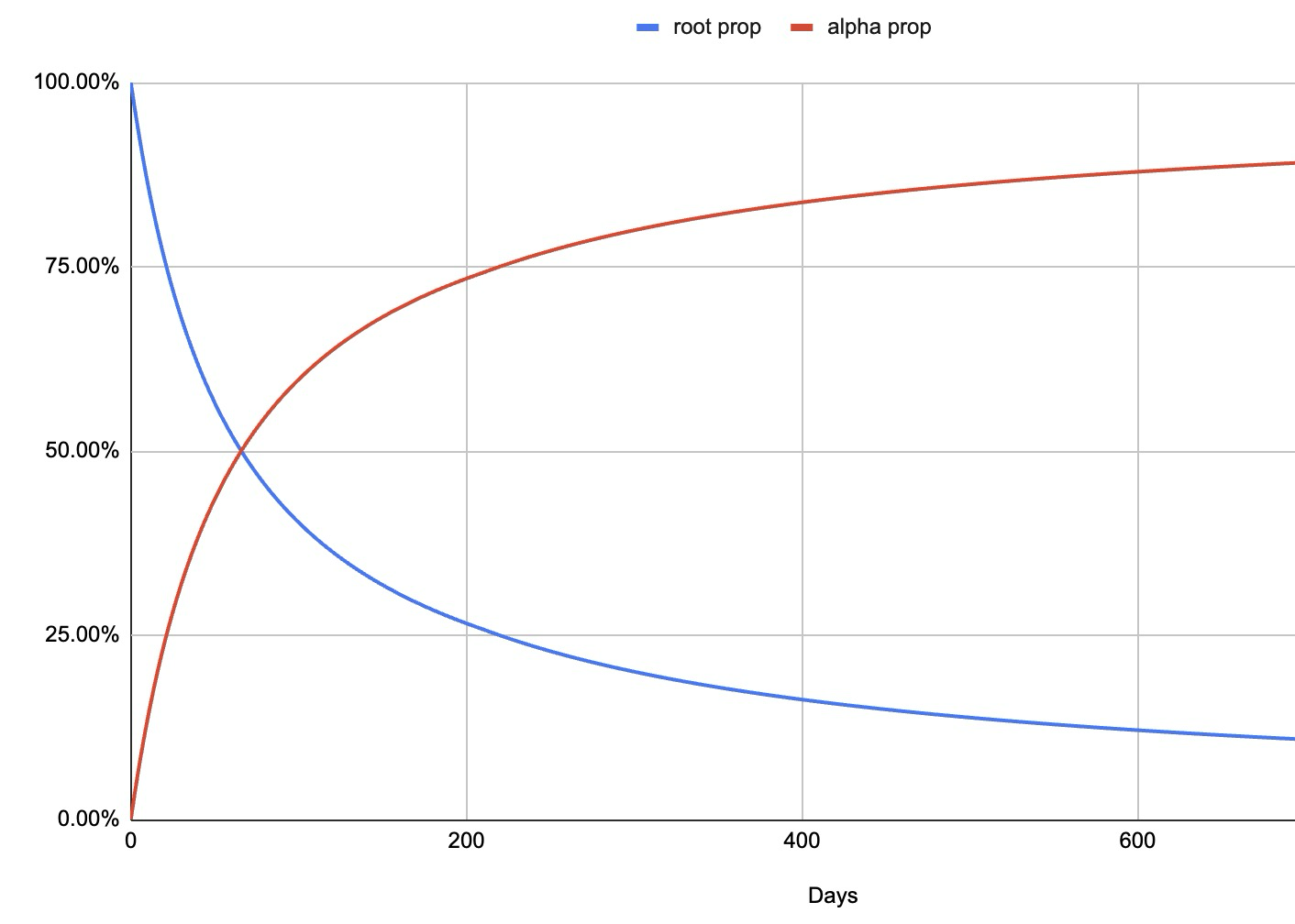Emission in Dynamic TAO
Emission is the process by which the Bittensor network allocates TAO and alpha to participants, including miners, validators, stakers, and subnet creators.
It unfolds in two stages:
- Injection into subnets
- Extraction by participants
See the Dynamic TAO Whitepaper for a full explanation.
Injection
The first stage of emissions is injection of liquidity into the subnet pools. Each block:
- TAO is injected into the subnet's TAO reserve.
- alpha is injected into the subnet's alpha reserve.
- alpha is allocated to alpha outstanding, to be extracted by participants.
Liquidity injection to each subnet is in proportion to the price of its token compared to the price other subnet tokens. This is designed to incentivize development on the most valuable subnets. Recall that price is equal to the ratio of the subnet's TAO in reserve to alpha in reserve.
TAO reserve injection
Given set S of all subnets, and a total per block TAO emission , which begins at 1 TAO and follows a halving schedule, TAO emission to subnet with price is:
Alpha reserve injection
Alpha is then injected in proportion to the price of the token (canceling the price out of the equation), so that growth of a subnet's liquidity pools does not not change the price of the alpha token. However, alpha injection is capped to prevent runaway inflation. The cap, or alpha emission rate for subnet , starts at 1 and follows a halving schedule identical to that of TAO, beginning when subnet is created.
Alpha emission is:
Alpha outgoing injection
Each block, liquidity is also set aside to be emitted to participants (validators, miners, stakers, and subnet creator). The quantity per block is equal to the alpha emission rate for subnet .
Extraction
At the end of each tempo (360 blocks), the quantity of alpha accumulated over each block of the tempo is extracted by network participants in the following proportions:
-
18% by subnet owner
-
41% by miners
-
41% by validators and their stakers:
-
First, validators extract their take.
-
Then, TAO and alpha are emitted to stakers in proportion to the validators' holdings in each token. TAO emissions are sourced by swapping a portion of alpha emissions to TAO through the subnet's liquidity pool.
For validator x's TAO stake , and alpha stake , and the global TAO weight :
-
TAO is emitted to stakers on the root subnet (i.e. stakers in TAO) in proportion to the validator's stake weight's proportion of TAO.
-
Alpha is emitted to stakers on the mining subnet (i.e. stakers in alpha) in proportion to the validator's stake weight's proportion of alpha:
Validators who hold both root TAO and subnet alphas will extract both types of token.
-
-
Note on evolution of Bittensor token economy
When Dynamic TAO is initiated, there will be no alpha in circulation, so validator's stake weights will be entirely determined by their share of TAO stake.
But far more alpha than TAO is emitted into circulation every block. As a result, over time there will be more alpha relative to TAO in overall circulation, and the relative weight of a validator in a given subnet will depend more on their alpha stake share relative to their share of the TAO stake on Subnet Zero.
In order to hasten the process of alpha gaining the majority of stake power in the network, the contribution of TAO stake to validator stake weight is reduced by a global parameter called TAO weight. Currently, this is planned to be 18%, in order to achieve a weight parity between TAO and total alpha in approximately 100 days.

